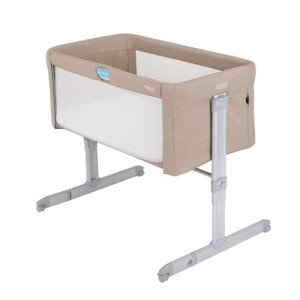The Ultimate Guide to Choosing a Baby Cot Bed: Safety, Features, and More
When it concerns welcoming a brand-new baby, among the most crucial purchases moms and dads will make is a baby cot bed. This important furniture piece is not just where a baby will sleep; it's likewise an area of comfort, security, and security. Offered the wide variety of options available on the market today, making a notified choice can be frustrating. This guide aims to streamline the procedure by covering important features, safety requirements, types of cot beds, and far more.
Tabulation
- Intro
- What is a Baby Cot Bed?
- Safety Standards
- Types of Baby Cot Beds
- 4.1 Traditional Cots
- 4.2 Convertible Cot Beds
- 4.3 Portable Cots
- Key Features to Consider
- Picking the Right Mattress
- Setting Up the Cot Bed
- Frequently asked questions
- Conclusion
1. Introduction
A baby cot bed acts as a devoted sleeping area for babies and is developed to provide convenience and safety. As brand-new moms and dads browse the various options available, it is essential to comprehend the different kinds of cot beds, safety guidelines, and essential features to make the very best choice.
2. What is a Baby Cot Bed?
A baby cot bed is a specialized piece of furniture where babies sleep. Unlike regular beds, cot beds are particularly designed for infants and provide a safe environment for them to rest. They usually include high sides to prevent infants from falling out and often come with adjustable bed mattress heights to accommodate a growing child.
3. Security Standards
When picking a baby cot bed, safety needs to be the primary consideration. Here are some vital safety requirements to remember:
- Certification: Ensure the cot bed fulfills national and international safety requirements, such as the ASTM International and Consumer Product Safety Commission (CPSC) regulations.
- Slat Spacing: The distance between slats need to not surpass 2 3/8 inches to avoid the baby's head from slipping through.
- Stability: Ensure that the cot bed does not wobble or shake.
- Non-Toxic Materials: Check for non-toxic finishes and products to ensure the baby's safety.
4. Kinds Of Baby Cot Beds
The marketplace offers numerous kinds of cot beds, each accommodating various needs. Below is a summary of the most common types:
4.1 Traditional Cots
Conventional cots are standalone furnishings products created particularly for infants. supplemental resources come with repaired sides and multiple adjustable mattress heights.
4.2 Convertible Cot Beds
Convertible cot beds can be transformed into toddler beds, enabling extended use. This type is an affordable option as it grows with your child.
4.3 Portable Cots
Portable cots, likewise called travel cots or playards, are lightweight and created for households on the go. They can be quickly put together and disassembled for travel.
5. Secret Features to Consider
When picking a cot bed, moms and dads need to consider the following functions:
- Adjustable Mattress Height: This feature permits decreasing the mattress as the baby grows, making it easier for parents to lift the kid.
- Product Quality: Look for a cot bed made from long lasting, non-toxic wood.
- Security Features: Some cot beds include rounded edges and additional safety locking systems.
- Reduce of Assembly: Check if the cot bed needs very little tools for assembly and how simple it is to take apart.
- Storage Options: Some cot beds feature built-in drawers for keeping baby basics.
6. Choosing the Right Mattress
The right bed mattress is essential for your baby's sleep quality. Here are some tips for picking a suitable mattress:
- Firmness: A mattress needs to be firm adequate to avoid the baby from sinking in too deep, reducing the risk of suffocation.
- Breathability: Opt for breathable products to make sure correct air flow.
- Water-Resistance: Consider waterproof covers for easy cleansing and hygiene.
7. Establishing the Cot Bed
Installing the cot bed properly is important for safety. Here are steps parents ought to follow:
- Choose the Right Location: Place the cot bed far from windows, cables, and other possible threats.
- Examine the Height: Adjust the mattress height based upon the child's age and mobility.
- Eliminate Extras: Avoid placing pillows, blankets, or stuffed toys inside the cot bed when the baby is sleeping.
- Inspect Regularly: Regularly inspect all elements and screws for wear and tear.
8. FAQs
Q1: At what age should a baby transition from a cot to a bed?
Many children shift to a young child bed between 18 months to 3 years, depending upon their development and private needs.
Q2: How can I guarantee my baby sleeps securely in their cot bed?
Ensure the cot is without soft bed linen, toys, and anything that might block the baby's breathing. Follow all security guidelines thoroughly.
Q3: Is it required to have a different nursery for the cot bed?
While lots of moms and dads pick to have a separate nursery, it is not a requirement. As supplemental resources as the cot bed remains in a safe and quiet environment, it can be positioned in the parents' bedroom.
Q4: When is it safe to decrease the mattress?
Generally, the bed mattress ought to be decreased when the baby can pull themselves up or when they can sit individually, typically around 6 months.
9. Conclusion
Selecting the ideal baby cot bed is an essential aspect of preparing for a brand-new arrival. Moms and dads should prioritize safety, performance, and quality, ensuring that the cot bed fulfills their household's distinct needs. By making the effort to research study and understand different types of cot beds, parents can provide a safe and comfy sleeping environment for their child to flourish.
With cautious consideration, moms and dads can ensure that the cot bed is not just a furniture piece, however a sanctuary where their baby can sleep peacefully during those vital early years.

